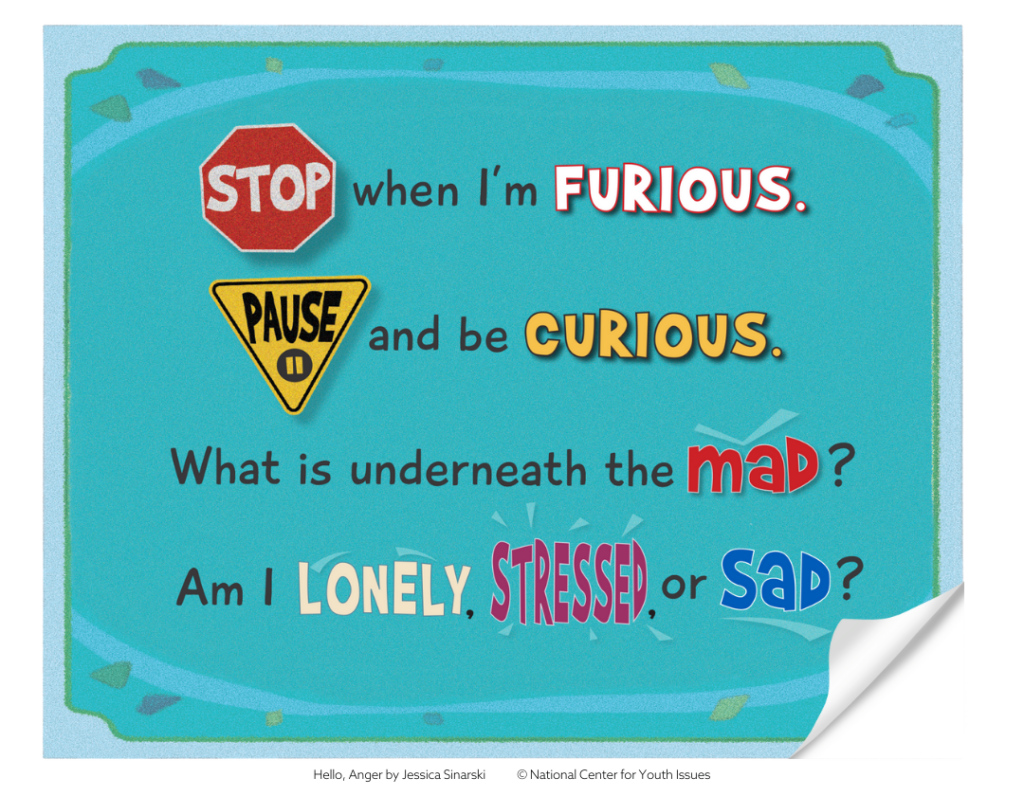A Parent’s Guide to Tiger Moments
Angry outbursts can do serious harm.
Hitting, breaking a sibling’s toy, yelling at the teacher…these behaviors do more than just hurt people in the moment. Explosive behavior can cause lasting damage in relationships and perpetuate even more feelings of anger (and shame).
So it makes sense that parents, teachers, and therapists want to help kids learn to manage big, angry feelings.
If your kids are anything like the children I’ve worked with over the years, however, just learning to breathe or count to 10 isn’t going to cut it. We have to dig deeper. Unfortunately, that’s hard to do, because…
Anger is a powerful, protective emotion.
When our senses pick up on some kind of possible danger (whether physical, emotional, or relational), chemicals and electrical impulses flood into the Downstairs Brains to activate our “fight or flight” state.
If a grizzly bear is coming at you, you need some extra energy to fight or run for your life! Let’s think of that automatic, quick-acting protection mode as the Tiger part of the brain. Everyone has a “Tiger Protector,” ready to swipe and scratch and roar.
Here’s the thing, though. The Downstairs Brain knows that something is wrong, but it’s not very good at figuring out what the real problem is. Our Tiger Brain often jumps into action when the actual “danger” we are facing is:
- Stress
- Fear of failure
- Frustration
- Confusion
- Disappointment
- Grief
- Shame
- Scary memories
- Feeling left out
The list of possible “danger” signals is endless! It might be a little sibling rivalry or not getting invited to a birthday party, and that Tiger under the surface is ready to jump into action. Pupils dilate, heart rate increases, breathing quickens, and thoughts narrow as we instantly prepare to fight or run away from the “danger” in front of us.
It’s a brain thing!
Often, the Tiger Brain swoops in to protect us from uncomfortable or vulnerable feelings. We get to feel strong and in control…at least for a moment.
But the triumphant feelings don’t last. And yelling, posturing, or hurting others doesn’t get rid of the uncomfortable feelings underneath. In fact, we usually end up with more feelings piled up on top of the original trigger.
Plus, no one likes being on the receiving end of someone else’s “Tiger Moment.” So relationships suffer, and Downstairs Brain “protection mode” begins to run the show.
Luckily, that’s not the end of the story. You can help kids learn to use their creative, compassionate, problem-solving Upstairs Brain to help that Tiger Brain out. In fact, that’s one of the main jobs of the Upstairs Brain. But it takes lots of time and lots of practice. Here’s a little rhyme to help you get started:
How to explain anger to a child
Stories and visuals help kids connect with difficult topics. Here are a few ideas for explaining anger and building connections in the brain that will be more effective than superficial anger management strategies.
Ages 0-3
Start young with board books like Hands Are Not for Hitting by Martine Agassi and My Many Colored Days by Dr. Seuss.
Around age 3, try introducing books like Ravi’s Roar by Tom Percival or Grumpy Monkey by Suzanne Lang. Gorilla’s Muscles by Flourishing Life Press is another great one that includes a few helpful notes for grown-ups in the back.
Ages 4-10
Use the Riley the Brave series to introduce the concept of “tiger moments” when we want to roar or swipe at others. This is a gentle way of helping kids (and adults) own their angry moments without getting lost in shame and blame.
These elementary school years are a great time to dig deeper using the lessons, games, and activities in Riley the Brave’s Big Feelings Activity Book.

Ages 7-12
As the title implies, Hello, Anger is designed to help you talk about anger. Using the metaphor that uncomfortable feelings are like heavy books we carry around with us, the students at Sunnyvale Elementary learn to be backpack detectives, especially when the fiery red book ANGER starts flying out of everyone’s backpack. Keep the conversation going with some do’s and don’ts in the back of the book or the digital resource pack full of printables, activities, and more.
If you have a child who enjoys writing, try using Samantha Snowden’s Anger Management Workbook for Kids.
Last but not least, Your Amazing Brain: The Epic Illustrated Guide brings all these complicated neuroscience and emotional intelligence concepts into one epic picture book! Using comic book style illustrations and empowering, kid-friendly language, this non-fiction title covers a lot more than anger. Think of it as a user’s manual for the most important part of your body: Your Amazing Brain! Plus there is a quick guide for grown-ups along with some brain-boosting activities in the back.
Remember, anger is not bad.
It’s just letting us know that something is up. As kids get better at noticing the signs that their Tiger Brain is jumping into action, they will start to…
Stop when I’m furious.
Pause and be curious.
What is underneath the mad?
Am I lonely, stressed, or sad?
I’m glad we’re in this together!
